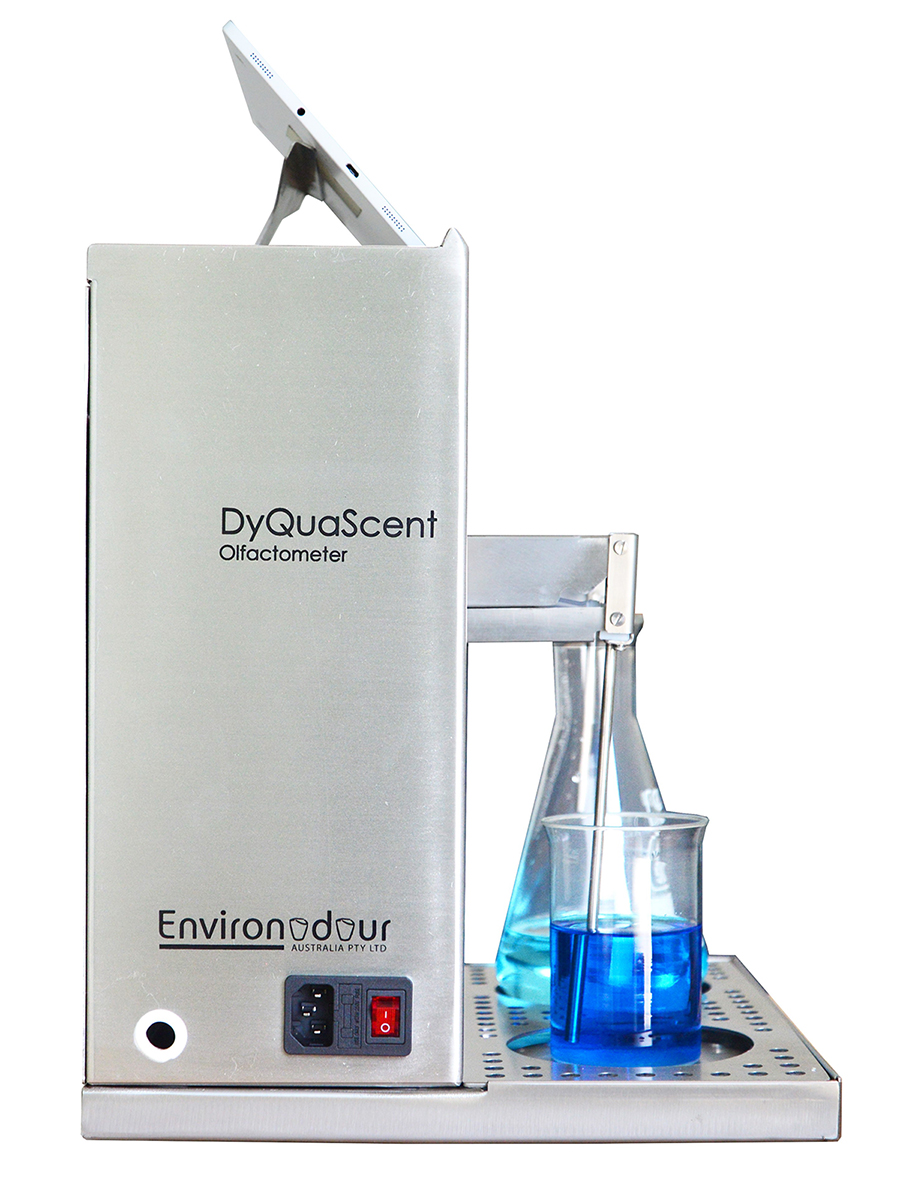EnvironOdour’s DyQuaScent olfactometer is used to measure the Threshold Odour Number (TON) in drinking water, water from natural resources and industrial water. This TON is one of the criteria that determines water quality. It can assess the effectiveness of different treatments and provide a means of tracing the source of contamination. It was developed from Method 2150 Odour in the Standard Methods for the Examination of Water and Wastewater, 23nd edition, 2017.
The TON is determined by diluting a sample of odorous water with odour-free water until there is a confirmed sample of least definite perceptible odour. A series of dilutions is prepared in glass flasks and the headspace is saturated with the odour. A group of trained panelists is employed to assess the odour. The testing takes place by randomly presenting the odorous mixtures for the panelists together with blanks (odour free water). The panelists smell the headspace above the mouth of the flask and confirm the presence of an odour by selecting the “affirmative” option. Otherwise, the “negative” option is selected. When each panelist has completed all the dilutions, the TON is then calculated from the succeeding dilution steps.
The main features of the DyQuaScent olfactometer include the following:
- The experimental procedure has been improved to incorporate the latest developments in sensory evaluation technique and standardization.
- The system is more efficient than the traditional manual method. The sample result is available within 20 minutes while using five panelists.
- The testing is fully automatized to minimize the operator’s measurement errors.
- The system has a built-in water heater to bring the sampling mixture to a temperature of 40 °C as specified in the standard method. No sample heating is required.


